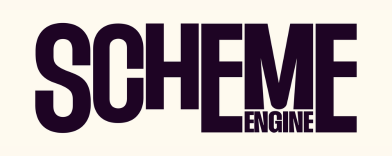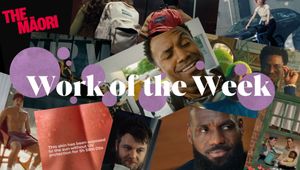
Zombie Studio's Stop-Motion Masterpiece Celebrates All Paths to Parenthood

Following the success of their previous collaboration for Café Joyeux’s ‘47’, Klick Health and Zombie Studio rejoined forces for ‘18 Months’ – a true story seen through the lens of a ‘metaphorical pregnancy’. Speaking with both the agency and production company, LBB’s April Summers discovers how the teams put a great deal of heart and soul into ensuring this stop-motion film would do justice to the inspiring tale of a baby found in a subway station 25 years ago.
Sitting down with Paulo Garcia, partner and creative director at Zombie Studio, and co-creators Andrea Bistany and Amy Fortunato, group creative directors at Klick Health, LBB finds out how handling of sensitive subject matter with sweet-natured sentimentality and curiosity has become Zombie Studio’s forte.
Exploring the real-world characters this short is based on, serves as a reminder that, at our core, all human beings are simply striving to connect with one another.
LBB> The concept of framing this adoption journey as a ‘metaphorical pregnancy’ is both poetic and powerful. Where did that idea come from? And what made it feel like the right storytelling structure for this story?
Amy> Our intent was to combat the belief that biological birth is the only ‘real’ way to start a family. By framing the couple’s legal and emotional process to adopt Kevin as a metaphorical nine-month gestational journey, we were able to validate adoption as just as valid and life-changing as a biological pregnancy. This framing not only reflects their journey but also honors the woman who gave birth to Kevin, recognising her as the first chapter in his story and a quiet but powerful presence throughout the film.
LBB> The incredibly layered visual style of ‘18 Months’ combines a mix of stop-motion, 2D animation, CGI, and handmade dolls. What led to the decision to take a mixed-media approach? And how did each technique serve the story?
Andrea> We always start with a story that has emotional truth. Something that makes us feel something deeply. Then we ask: how can the craft itself become part of the message? Whether it's paper sets made from old pregnancy books or character textures that reflect vulnerability and strength, every visual choice is there to serve the story.
We wanted to challenge outdated ideas about family and celebrate all paths to parenthood, especially for adoptive and LGBTQ+ families. This story offered a deeply human way to start that conversation.
Paulo> At its heart, 18 Months is a stop-motion film. We built every set and every main character by hand, because we wanted the world to feel real – fragile, imperfect, and deeply human. There’s something magical about seeing love and struggle play out in a physical space you can almost touch. We only used CGI for the facial expressions, which helped us bring more emotional depth to the characters’ performances, while also giving us more flexibility on set. It was a way to get closer to their inner world without losing the handmade soul of the film.
One of my favourite elements of the film is the way we treated secondary characters. They appear as soft shadows, and that choice was both emotional and practical. Narratively, we didn’t want them to distract from the intimacy of the couple’s story. Technically, we animated them in 2D and projected them onto the set in sync with the stop-motion camera. It avoided heavy post work and added a beautiful, ghostlike layer that feels unique and intentional — like the world is watching, quietly, from the sidelines. The judge, on the other hand, felt like a presence that needed to be more physical, more imposing. We brought in a rod puppet, a technique we loved using in our film 47. The courtroom is the emotional climax of the film, and using that style gave the moment weight and urgency — as if the system itself had a body.
Each technique used came from an emotional place first. The goal was always to serve the story and to make you feel it, not just watch it.
LBB> I loved learning how the sets were made from torn-up pregnancy books - what a striking visual metaphor. Can you talk us through the conceptual and production process behind that choice? How many books did you use!?
Paulo> The idea came from a symbolic place. These parenting books are full of rules and expectations, and many of them don’t include families like Pete and Danny’s. So we tore them apart and used them to build the world our characters move through.
At first, we weren’t sure if this idea would be noticeable in the film itself – it’s something you usually explain in a making-of. But it became so naturally embedded in the craft that it gave the film a unique, unexpected texture we truly love. We used around 40 books. If you look closely, you’ll find womb diagrams on walls, breastfeeding tips on signs — subtle reminders of a system that wasn’t built for them, quietly shaping their path.
LBB> How did you approach the character design in a way that captured both the real-life essence of each person and the emotional tone of the story?
Paulo> Designing characters based on real people is never easy. With 18 Months, we wanted to bring Pete and Danny into the film as truthfully as possible, but without going for a hyper-realistic look. Instead, we aimed for something more unique and expressive, which is why their designs are slightly elongated. It gave the characters a distinctive presence while keeping them grounded.
One element I was very intentional about was their feet. In stop-motion, it’s common to give characters thinner legs and feet because it’s easier to animate and often considered more elegant. But in this story, I wanted the opposite. Their wider, more triangular legs and feet were a way to express strength and grounding — the sense that these are people making bold, mature decisions. Adopting a child as a gay couple in the early 2000s takes courage, and that idea informed the physical shape of their bodies.
At the same time, we were careful never to make them feel harsh or rigid. Their facial expressions are soft, warm, and balanced — because at its core, this is a story about unconditional love.
LBB> You must have encountered a few creative and logistical challenges in producing a film with such intricate materials and animation techniques. Can you tell us about one, and how you overcame the challenge?
Paulo> One of the biggest challenges was syncing the 2D-animated shadows of the secondary characters with the stop-motion camera, in real time. We didn’t want to composite them in post — we wanted those shadows to exist physically on set, interacting with the world. The tricky part was that once we started animating in stop-motion, we couldn’t change the lighting or we’d lose the entire shot. So everything had to be carefully planned and locked before the first frame. It was a huge risk.
But the way the shadows interacted with the textures and deformations of the sets was so beautiful — organic, imperfect, and full of nuance. It brought an emotional depth that made the risk worth it. That layer became one of the most poetic and distinctive choices in the film.
LBB> The animation conveys complex ideas like love, fear, legal hurdles, and resilience, without the traditional use of dialogue . How did you use visual storytelling, pacing, and sound to express the right emotions in a way that felt authentic to the true story?
Paulo> In our work, music usually plays a strong emotional role. But with 18 Months, we were telling a nearly five-minute story with multiple emotional shifts — each one subtle, yet profound. So we chose to give everything more space. We needed the tension to feel present, and we didn’t want the emotional peaks to cancel each other out.
The film unfolds in chapters. It begins with a haunting female voice – the birth mother – and we made sure to show the reality she was living in. Sometimes leaving a child isn’t an act of violence, but one of love. That complexity needed to be there from the start. Later, when Danny receives the letter, we hear the ticking of a clock — not physically, but in his mind. It signals what’s coming, building dread without a single word. Then we cut to the courtroom. He’s already unraveling inside, and now the external tension takes over. The camera becomes the storyteller, revealing the atmosphere and pressure, while the score shifts to carry that weight. Throughout the film, we also used metaphor as a way to express feelings that words couldn’t. In the park scene, shadows rise on a wall behind the couple – growing, judging – a visual metaphor for society’s quiet, constant scrutiny. And when the child is taken away, the father is pulled into a vacuum, disconnected from everything, surrounded only by the echoes of a world that doesn’t see him.
These visual choices allowed us to portray pain, fear, and resilience in ways that felt poetic and unexpected. We went through countless versions of the animatic. Without dialogue, every frame needed to feel right, and sound design was key. It’s what allowed us to guide emotion in a story built on silence.
LBB> The music is also very powerful, though, of course. Can you tell us about your decision to use this duet version of A Thousand Years? What role did music play in shaping the emotional tone of the narrative?
Amy> ‘A Thousand Years’ is a love song that transcends time and convention: the perfect emotional thread for a story about waiting, hoping, and finally finding home. It perfectly mirrors the story’s emotional arc, and by reimagining it as a duet, it reflects both the birth mothers and adoptive father’s love, converging into one shared family journey.
LBB> Why did Klick Health want to take on this project? What felt timely, or necessary, about telling this story now?
Andrea> After our previous film with Zombie, ‘47,’ one of our agency’s pharma clients told us she loved the film. She proceeded to tell us a personal story and asked us if we’d ever consider making a film about adoption. The idea gestated as we researched and realised that there is no wrong way to build a family. This has been one of the most meaningful things we’ve ever worked on. Helping reframe what makes a family, and doing it through art, is the kind of work that matters most.
LBB> How do you envision 18 Months driving change? Whether that be in how audiences view adoption, support LGBTQ+ families, or understand the broader mission of Second Nurture?
Amy> 18 Months embodies the mission of Second Nurture: supporting foster and adoptive families and challenges outdated ideas about who can be a parent. Pete and Danny’s story beautifully demonstrates that families are formed in many ways and love is the film’s thread. We hope people take away from the film that every child deserves a loving family and every family deserves support. Whether you’re fostering, adopting, or just considering it, you’re not alone. Community makes the difference and anyone can play a role in making that happen.
LBB> Given how beautifully this PSA is, I was wondering if you have any advice for fellow creatives and marketers working with nonprofits or advocacy groups. How can they craft stories that are emotionally resonant but never feel didactic?
Andrea> People want to feel. They want to be moved, and they want to connect. Focus on real stories, authentic moments, and specific experiences rather than trying to teach the audience something.
Learn more at 18monthsfilm.com, and take real-world action at 2nurture.org
Read more from LBB’s April Summers here















